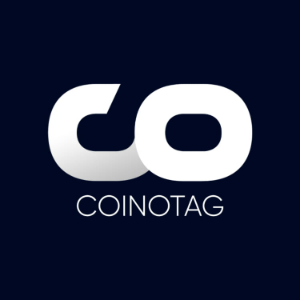Why Ripple Will Never Offer $20 Billion to Acquire Circle
4 min read
Rumors of Ripple potentially acquiring Circle have spread on social media, driven by reports of their strategic alignment in the stablecoin market. However, according to a recent post by crypto commentator Dom on X, there is little chance Ripple would offer anything close to $20 billion to acquire Circle . According to Dom, a more realistic valuation for Circle would be around $5 billion, which better reflects the company’s financial performance. fyi @circle IPO valuation is ~$5 billion (which is the valuation Ripple is looking at when it made its acquisition offer). there is no way Ripple would offer $20 billion for Circle. ps i see lots of people saying $5 billion is a low offer since circle holds $60 billion in… — Dom (Bull/ish) | EasyA (@dom_kwok) May 2, 2025 Understanding Circle’s True Valuation Circle, the issuer of the popular USD Coin (USDC) stablecoin, has long been a prominent player in the digital payments ecosystem. Currently, Circle oversees the issuance of roughly $60 billion worth of USDC, all backed by collateralized reserves in highly liquid assets such as U.S. Treasuries and cash equivalents. This large reserve figure often misleads some observers into believing that the company itself owns the $60 billion outright, which is not the case. Dom clarifies in his post that this $60 billion in reserves does not translate into equity value for Circle. The assets are legally structured to back the stablecoins in circulation, not to enhance Circle’s balance sheet. Instead, Circle’s revenue model primarily stems from the yield generated on these reserves. That yield—essentially the interest income from short-term government securities and other low-risk instruments— drives Circle’s earnings and, consequently, its enterprise valuation. Ripple’s Acquisition Logic Doesn’t Support a $20 Billion Bid Given this business model, Dom argues that Circle’s $5 billion IPO valuation is a fair reflection of its income potential rather than its collateral base. From a corporate finance perspective, Ripple would unlikely offer a premium of 4x above that figure, particularly since the collateral that backs USDC is neither transferrable nor revenue-generating. With its ambitions in the stablecoin space and broader payments ecosystem, Ripple has little incentive to overpay for Circle. The company recently announced its entry into the stablecoin market with RLUSD, a new XRP Ledger-native stablecoin backed 1:1 by U.S. dollar reserves. With Ripple now pursuing its native digital dollar equivalent, a $20 billion acquisition offer for a competitor becomes even more implausible. A potential acquisition of Circle would depend on various factors, including current revenue, future cash flows, regulatory risks, and market competition. Given the growing regulatory scrutiny on stablecoins and Circle’s interest-rate-dependent revenue model, paying a high premium would pose significant risks. We are on twitter, follow us to connect with us :- @TimesTabloid1 — TimesTabloid (@TimesTabloid1) July 15, 2023 Market Misunderstandings and Misinformation Dom’s post also addresses a broader misunderstanding within the crypto community: conflating collateral under management with enterprise value. This oversight can artificially inflate valuations, especially in stablecoin sectors where most assets are held in custody. The $60 billion in assets isn’t freely available for growth or acquisitions, but rather for redeeming USDC. In fact, Circle’s actual enterprise value must be assessed through more conventional metrics, such as revenue from interest earnings, growth potential, user base expansion, and strategic positioning. All of these fundamentals support the $5 billion valuation figure cited in Dom’s post, and not the speculative $20 billion figure circulating in some corners of the crypto world. Rational Valuations in an Evolving Ecosystem As the stablecoin race heats up and traditional players like PayPal and financial institutions enter the fray, strategic acquisitions will likely play a role in shaping the future of digital finance. However, companies like Ripple, which take a calculated, enterprise-focused approach, are unlikely to fall into the trap of overpaying based on inflated or misunderstood metrics. Ripple’s track record suggests it values utility, scalability, and sustainable revenue over hype-driven moves. Dom’s breakdown of Circle’s valuation underscores why any serious acquisition offer would remain grounded in financial reality—and why a $20 billion price tag simply doesn’t make sense. Disclaimer : This content is meant to inform and should not be considered financial advice. The views expressed in this article may include the author’s personal opinions and do not represent Times Tabloid’s opinion. Readers are urged to do in-depth research before making any investment decisions. Any action taken by the reader is strictly at their own risk. Times Tabloid is not responsible for any financial losses. Follow us on Twitter , Facebook , Telegram , and Google News The post Why Ripple Will Never Offer $20 Billion to Acquire Circle appeared first on Times Tabloid .

Source: TimesTabloid



